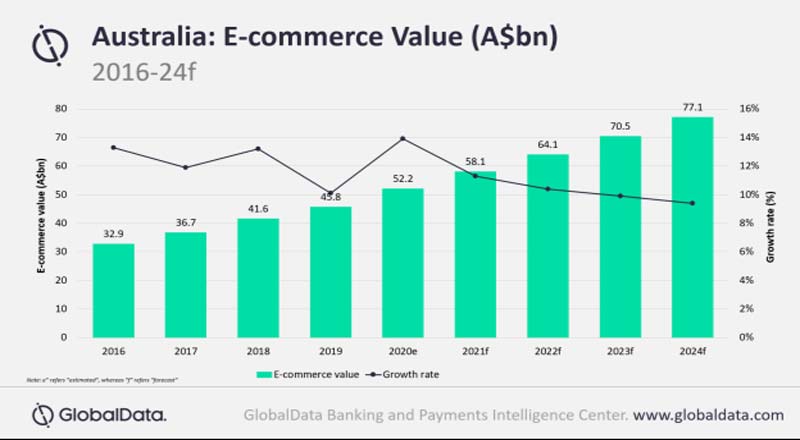Australia’s e-commerce market has been on a growth curve during the past few years and the recent COVID-19 outbreak has further accelerated this trend. The country’s e-commerce market is forecast to grow at a compound annual growth rate (CAGR) of 12.3% between 2016 and 2020 to reach A$52.2bn in 2020, according to GlobalData, a leading data and analytics company.
Ravi Sharma, Banking and Payments Lead Analyst at GlobalData, comments: “Social distancing, self-isolation, closure of brick and motor stores due to lockdown measures have led to higher preference for online channel by consumers for making purchases during the pandemic. The current crisis opened e-commerce market to a whole new set of consumers who were earlier not using online channel.”
An analysis of GlobalData’s E-Commerce Analytics reveals that one of the key barriers for e-commerce adoption in Australia was consumers’ behavior to physically see products before purchasing. This is gradually changing as physical stores are being shut and consumers are being compelled to shop online. According a report by Australia Post, in April 2020 alone 200,000 new shoppers entered online space in the country.
According to GlobalData’s 2020 Banking and Payments Survey*, credit and debit cards are the most preferred method for e-commerce payments by consumers, accounting for 49.3% share. Alternative payments like PayPal, Apple Pay and Google Pay are increasingly preferred as they offer added convenience by enabling faster payments during checkout.
Meanwhile, ‘buy now, pay later’ service is also becoming a popular payment option in Australia. Leading provider in this space ‘Afterpay’ has a customer base of 3.3 million with 5.5% share in e-commerce market by value. ‘Buy now, pay later’ is particularly being preferred among millennials, who are using this service as a budgeting tool to spread payments out over time.
Mr Sharma concludes: “The increased use of online shopping during the pandemic prompted high growth in online sales as retailers and consumers adapt to a new normal. E-commerce has become the default option for several customers in Australia and is set to remain the preferred method even beyond this pandemic.”





